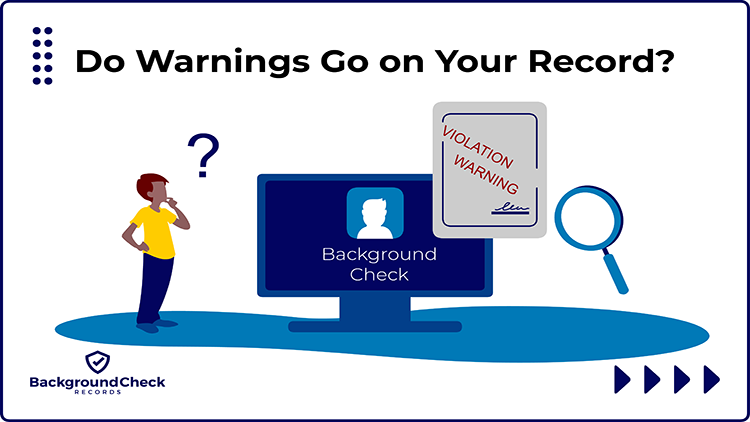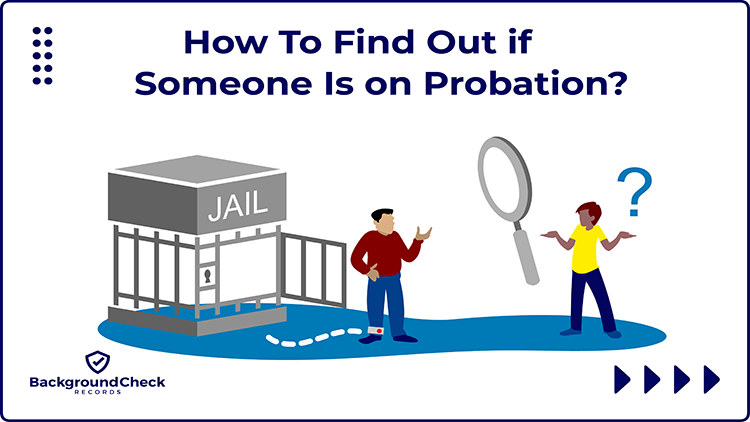We use cookies to ensure that we give you the best experience on our website. If you continue to use this site we will assume that you are happy with it.
Does a Restraining Order Go on Your Record? (Check Now in Seconds)
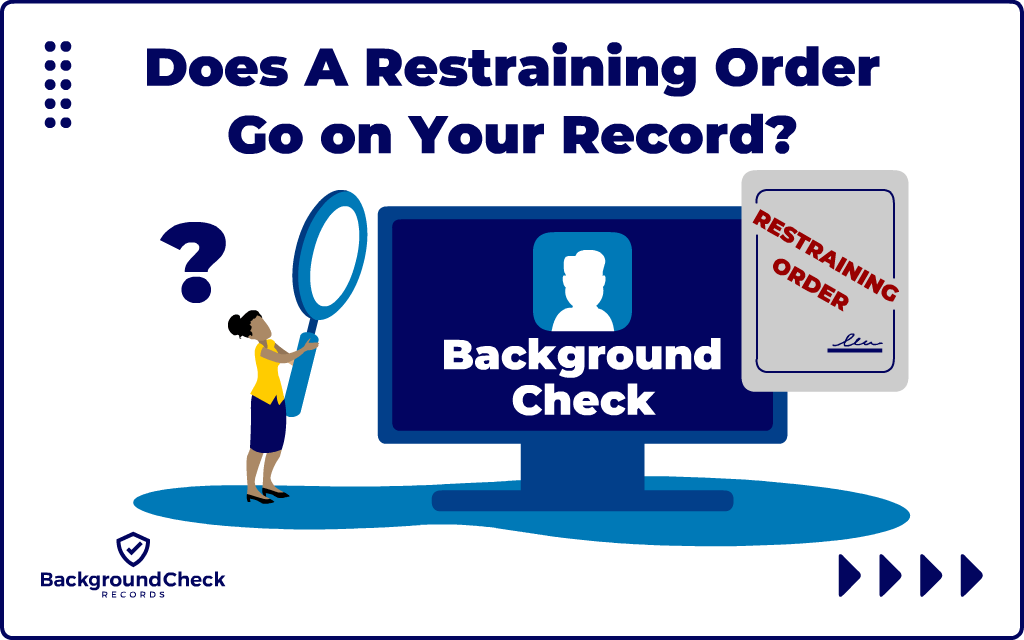
Table of Contents
When a restraining order (or protective order) is issued against someone, many individuals are concerned about its potential effects on their employment, credit, and housing options.
Since restraining orders are legal directives mandating one person to refrain from contact and stay away from another, whether it appears on a record depends on several factors. Anyone can quickly check if a restraining order is recorded using the search form below.
When Do Restraining Orders Go on Your Criminal Record?
A restraining order can indeed be recorded, but it may not always be publicly accessible. Because restraining orders are civil protection measures, they might appear on records that are accessible to the public. However, they typically do not appear on a criminal record unless there has been a violation of the order. Violations could lead to criminal charges such as contempt of court or offenses related to violating domestic violence orders.1
Employment record checks are focused primarily on criminal history, and tenant screenings focus primarily on credit. Since these are the two most common record checks conducted, it’s unlikely a restraining order will appear on these record checks.
When thinking of restraining orders and how they appear on the record, it’s important to note that not all orders are the same. Some states may make a distinction between a restraining order and protective order, while other states may just use the term restraining order. Orders can also be temporary or permanent.
Do Temporary or Other Types of Restraining or Protective Orders Go on Your Record?
Temporary restraining or protective orders are usually entered for a short amount of time (anywhere from 7 to 10 days). The sole purpose of this order is to provide protection to the victim until the matter can be heard in civil court.
Temporary restraining orders, similar to permanent records, are documented in a person’s record, albeit not as easily accessible to the public as criminal records. As court-issued documents, they fall under the category of public records and can generally be viewed by the public, unless state laws restrict their disclosure.
However, unlike criminal records, they are not included unless there is a violation. Some states impose restrictions on the duration for which these records are retained.
Does a Restraining Order Stay on Your Record for Life or Forever?
Once a restraining order is entered by a judge in civil court, it becomes a public record and is subject to release upon request. Unlike credit judgments which drop off the public records in seven to 10 years, restraining orders can remain on the record much longer even if they have expired.
Regarding civil records and background checks, some states adhere to the FCRA rule regarding credit records; however, states are not required by federal law to remove civil court case files from the public records on the same schedule as credit history.2
The state’s administrative office of the courts sets the guidelines for the destruction of civil cases, based on legislative guidance. This includes restraining orders and protective orders.
Duration of a Restraining Order on Your Record
Restraining orders stay on record based on the retention schedule by the state administrative office of the court where the order was issued. Some states limit the retention time to a few years, while others deem protective orders or restraining orders to be permanent records.
The table below provides links to state statutes detailing the duration for which civil restraining orders are retained before being destroyed or archived by the state, indicating whether they remain on record indefinitely.
| State | Civil Judgment Public Record Time Limits by State |
| Alabama | 10 years from the date of final disposition |
| Alaska | 1 year from the final disposition |
| Arizona | 75 years from the final disposition |
| Arkansas | Permanent |
| California | Retained for the duration of active order. Temporary orders remain on record for 60 days following entry of order if no permanent order is entered. |
| Colorado | Permanent |
| Connecticut | 30 days after completion of final judgment |
| Delaware | 5 years from a final judgment |
| Florida | Permanent |
| Georgia | Archived after 7 years, retained permanently |
| Hawaii | 10 years from a final judgment |
| Idaho | Until deemed no longer administratively valuable |
| Illinois | 7 years from the final disposition |
| Indiana | Permanent |
| Iowa | Permanent |
| Kansas | 10 years from a final judgment |
| Kentucky | 10 years after final judgment |
| Louisiana | Minimum of 3 years from the final disposition |
| Maine | 1 year from completion of final judgment |
| Maryland | 12 years from when final judgment expires |
| Massachusetts | 6 years from a final judgment |
| Michigan | 6 years from case closure |
| Minnesota | 5 years from the final disposition |
| Mississippi | Permanent |
| Missouri | 75 years after the case is disposed |
| Montana | 10 years from date of final judgment |
| Nebraska | Permanent |
| Nevada | Permanent |
| New Hampshire | 6 years from date of final judgment |
| New Jersey | 1 year after final disposition |
| New Mexico | 1 year after completion of judgment |
| New York | 25 years from the date of filing |
| North Carolina | Permanent |
| North Dakota | 25 years from the date of disposition |
| Ohio | 18 months after final disposition |
| Oklahoma | 3 years after final judgment |
| Oregon | 10 years after final action or case closed or dismissed |
| Pennsylvania | 7 years from a final judgment |
| Rhode Island | 3 years from the final disposition |
| South Carolina | 10 years after the judgment |
| South Dakota | 5 years from completion of final judgment |
| Tennessee | 3 years after the final disposition |
| Texas | 12 years from the final disposition |
| Utah | 4 years from the date final judgment created |
| Vermont | Permanent |
| Virginia | 10 years after final judgment |
| Washington | 75 years from the date of final judgment |
| West Virginia | 10 years from a final judgment |
| Wisconsin | 20 years after final judgment |
| Wyoming | Up to 5 years from a final judgment |
Civil records are different from criminal actions when it comes to background checks. Restraining orders can be accessed but don’t necessarily appear on routine checks.
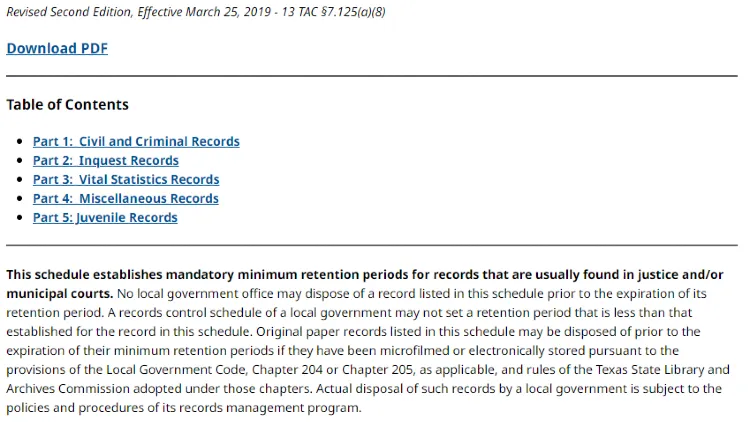
Do Restraining Orders Show Up on Background Checks? What if it Was for Domestic Violence?
Typically, a restraining order does not appear on routine background checks for employment or housing applications. While it can be recorded on your file, this does not necessarily mean it is easily accessible to the public.
Even domestic violence protective orders start in civil court, so they don’t automatically show up on routine background checks. Domestic violence orders can show up on firearms background checks. For background checks that require security clearance or jobs that involve public safety, a protective order may also appear on the screening report.
Does a restraining order go on your criminal record? Restraining orders are court records that are public records, but they do not typically appear on a person’s criminal record. Only violations of the order would appear on a criminal record if the person is found to be in contempt of the order, or if there was a criminal charge filed in conjunction with the civil order.
What’s the Difference Between a Restraining Order vs Protective Order?
The terms protective order and restraining order are often used interchangeably, and in some states, they do mean the same thing. However, other states make a distinction between a restraining order and an order of protection or protective order.

A protective order (sometimes called a domestic violence order, DVO, or domestic violence protective order, DVPO) is issued in civil court in cases involving intimate partner violence or to victims of child abuse or sexual assault.
Violations of protection orders, however, can result in criminal charges (either a gross misdemeanor or lower classification felony in the state) and can carry greater punishment if the person is convicted.
Additionally, statutes may order a law enforcement officer to arrest someone for a protective order violation prior to the matter being tried in court. For example, Virginia Code 19.2-81.3 states law enforcement shall arrest a person when the officer has probable cause to believe a protective order violation has occurred.3
Other states have similar requirements when domestic violence orders of protection have been violated by the defendant.
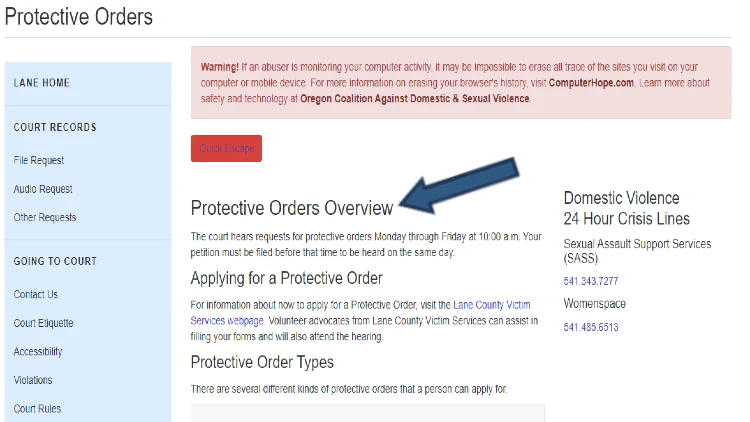
A restraining order is also issued in the civil court ordering someone to stay away from another person. Violations of restraining orders may not immediately result in a criminal charge or conviction for failure to follow the court’s order.
When the defendant violates a restraining order, the victim usually has to file a motion in civil court to hold the violator in contempt. Only if the person is found in contempt will the violation appear on a criminal record, and it will only show as contempt of court, not a violation of a restraining order.
While contempt of court is available in both protective orders and restraining orders, it is most commonly used in restraining orders. Protective orders have accompanying criminal statutes that specifically address violations because these cases usually involve intimate partners creating increased danger for victims.
Will a Restraining Order Cause You to Lose Your Job?
Besides inquiring about whether a restraining order becomes part of your record, one might also wonder if it could lead to job loss. The response to that question varies: Although a restraining order typically doesn’t directly result in job termination, there are some situations where it might.
Law Enforcement, Public Safety, and Military: Impact of Restraining Orders on Government Job Applications
Due to the nature of the work individuals employed in law enforcement, public safety (such as corrections), or the military could find their positions in jeopardy when they are subject to a restraining order or protective order.
Per federal code 18 USC § 922(g)(8), when a domestic violence order is issued against someone, they are no longer legally allowed to purchase or possess a firearm or ammunition, meaning they are barred from equipment used in their profession making them unable to do their jobs.4
Additionally, military members can be placed under a state restraining order where they are currently based, but they also face the possibility of a military protective order.
Military Protective Order
There is a special type of restraining order that only members of the United States Armed Forces can be subject to. Individuals in the military who are accused of a criminal act (particularly domestic violence or sexual assault) may find themselves placed under restrictions via a military protective order (MPO).
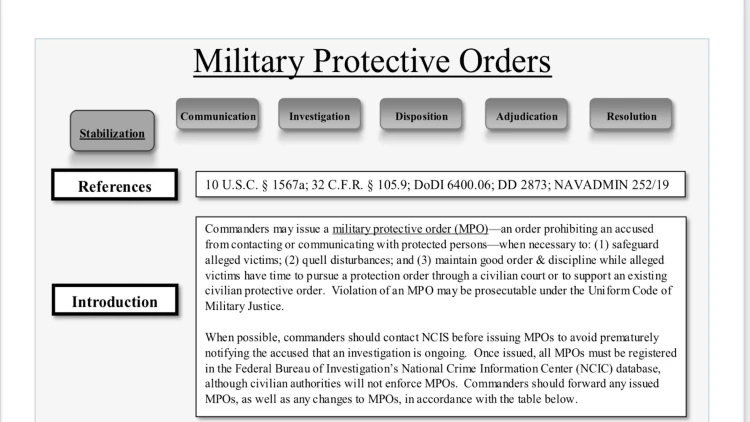
This order is issued by the commanding officer for the unit, battalion, or regiment and is enforceable on military bases. Violations of the order can lead to a court martial which can cause the service member to be discharged from the military under other than honorable conditions.5
Violations
When restraining orders or protective orders are violated, the offense may be criminally charged. This criminal charge will appear on a person’s criminal background and could result in loss of employment.
Other Instances When a Restraining Order Causes Termination of Employment
There are other factors that can cause someone to lose their job when subject to a restraining order. These include the following:
- Incidents that necessitated entry of the order occurred at the offender’s place of employment, or the person used agency equipment to facilitate the underlying harassment, abuse, or other prohibited activity.
- The parties to the restraining order work for the same employer. Employees who are victims of intimate partner violence have the right to be safe at work, so the employer may discharge the offender.
- Absence from work due to court hearings or court-ordered treatment can result in termination if they are excessive or interfere with a person’s ability to perform their duties. While some states protect workers from being discharged for complying with court orders, many states are at-will employment states meaning someone can be discharged for no reason.
There are several ways a restraining order or protective order can impact a person’s life, and someone shouldn’t hesitate to take steps if they find they are the defendant in a restraining order case.
What Should I Do if a Restraining Order or Protective Order Was Filed Against Me?
Anyone can petition the court, also known as file a restraining order, in civil court. If the judge feels there is enough information to enter a temporary order, one will be entered until the hearing date.
Otherwise, it will just be placed on the docket with no temporary order. The docket is the list of cases for hearing on that particular date.
Anyone can check now in seconds by conducting a personal background check or calling the clerk of court’s office in their area to see if a restraining order has been filed against them.
If a person learns a protective order or restraining order complaint was filed against them, they should immediately hire an attorney. An attorney will be able to explain the order in detail regarding what the person can and cannot do based on the judge’s restrictions.
If there are conditions requiring a person to surrender firearms or property, an attorney can help make this happen by coordinating with the defendant and law enforcement to protect everyone’s safety. The table below lists the statute for states that require the surrender of firearms pursuant to a domestic violence protective order.
| States That Require Surrender of Firearms Pursuant to a Domestic Violence Protective Order | ||
| California | Colorado | Connecticut |
| Hawaii | Illinois | Iowa |
| Maryland | Massachusetts | Minnesota |
| New Hampshire | New York | North Carolina |
| Tennessee | Washington | Wisconsin |
An attorney can also help the individual build their defense for court. The ultimate goal is to either get the case dismissed or have the judge rule in the defendant’s favor instead of the plaintiff.
Finally, an attorney can outline the defendant’s rights regarding the restraining order so if those rights are violated, the person knows what steps to take next.
Millions of restraining orders are sought annually in the United States, highlighting the significant impact they can have. These civil matters might surface on background checks, particularly if there are violations involved. Therefore, the best answer to whether a restraining order appears on your record is often “It depends.”
References
1 DOMESTIC VIOLENCE. (2020, August 7). Assets Service. Retrieved August 6, 2022, from <https://assets.speakcdn.com/assets/2497/domestic_violence-2020080709350855.pdf?1596828650457>
2 Fair Credit Reporting Act. (n.d.). Federal Trade Commission. Retrieved August 6, 2022, from <https://www.ftc.gov/legal-library/browse/statutes/fair-credit-reporting-act>
3 § 19.2-81.3. Arrest without a warrant authorized in cases of assault and battery against a family or household member and stalking and for violations of protective orders; procedure, etc. (n.d.). Virginia Law. Retrieved August 6, 2022, from <https://law.lis.virginia.gov/vacode/title19.2/chapter7/section19.2-81.3/>
4 PROTECTION ORDERS AND FEDERAL FIREARMS PROHIBITIONS. (n.d.). ATF. Retrieved August 6, 2022, from <https://www.atf.gov/resource-center/docs/guide/protection-orders-and-federal-firearms-prohibitions-atf-i-33102/download>
5 Military Protective Order. (n.d.). YouTube. Retrieved August 6, 2022, from <https://www.govinfo.gov/app/details/CFR-2019-title32-vol4/CFR-2019-title32-vol4-sec635-19/summary>

